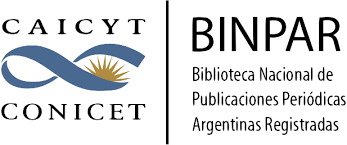Submissions
Submission Preparation Checklist
As part of the submission process, authors are required to check off their submission's compliance with all of the following items, and submissions may be returned to authors that do not adhere to these guidelines.- La petición no ha sido publicada previamente, ni se ha presentado a otra revista (o se ha proporcionado una explicación en Comentarios al editor).
- El fichero enviado está en formato OpenOffice, Microsoft Word, RTF, o WordPerfect.
- Se han añadido direcciones web para las referencias donde ha sido posible.
- El texto tiene interlineado simple; el tamaño de fuente es 12 puntos; se usa cursiva en vez de subrayado (exceptuando las direcciones URL); y todas las ilustraciones, figuras y tablas están dentro del texto en el sitio que les corresponde y no al final del todo.
- El texto cumple con los requisitos bibliográficos y de estilo indicados en las Normas para autoras/es, que se pueden encontrar en Acerca de la revista.
- Si esta enviando a una sección de la revista que se revisa por pares, tiene que asegurase que las instrucciones en Asegurando de una revisión a ciegas) han sido seguidas.
Artículos
la conforman contribuciones sobre temáticas geográficas, sociales y ambientales cuya extensión no debe exceder las 25 páginas (incluyendo notas, bibliografía, mapas, cuadros, etcétera). Es la sección central de la revista. Y está abocada a estudios e investigaciones de índole académica.
Aportes Académicos
abierta a contribuciones de comentarios críticos, avances de proyectos de investigación, informes de actividades de extensión, proyectos pedagógicos didácticos. Serán admitidas contribuciones con una extensión máxima de 15 páginas (incluyendo notas, bibliografía, mapas, cuadros, etcétera).
Reseñas
destinada tanto a reseñas bibliográficas (de artículos y libros) como de otros formatos (reseñas de documentales, videos, películas, entre otros). La extensión de estas contribuciones comprende un mínimo de 3 páginas y un máximo 6 páginas (incluyendo notas, bibliografía, mapas, cuadros). Serán especialmente valoradas aquellas reseñas que articulen en su desarrollo dos o más textos.
Conversaciones
espacio destinado a la presentación de diálogos donde se compartan saberes y/o prácticas espaciales – de comunidades indígenas, movimientos sociales, campesinos, entre otros- no necesariamente institucionalizados, legitimados e identificados como científicos/académicos. Y a referentes académicos sobre temas relevantes de interés en la revista. Serán admitidas una extensión máxima de 15 páginas (incluyendo notas, bibliografía, mapas, cuadros, etcétera).
Traducciones
sección de la revista destinada a la presentación de trabajos científicos, entrevistas o conversaciones ya publicados en otras revistas de otras lenguas y que han sido traducidos por los propios autores contando con previa autorización de los otros espacios donde ya se ha publicado y respetando la extensión y formato expresados en la sección artículos.
Miscelánea sobre Geografía y Arte
Este espacio está destinado al abordaje de asuntos en la interfase entre arte y geografía. La propuesta invita a personas vinculadas a estas áreas – artistas visuales, geógrafxs, músicxs, escritorxs, musicólogxs, antropólogxs, sociólogxs, etc – para que propongan un diálogo que tenga como resultado un texto híbrido y autoral con una extensión de 3 a 7 páginas. Se estimulará el uso de diferentes soportes (imágenes/fotografía, sonoros, cartográficos, plataformas virtuales, colajes) y la exploración de diversos géneros (poesía, ensayo, carta, crónica, canción).
Copyright Notice
Those authors who have publications with this journal accept the following terms:
The authors will retain their copyright and guarantee the journal the right of first publication of their work, which will simultaneously be subject to the Creative Commons Attribution License (indicated below) that allows third parties to share the work as long as indicate its author and its first publication in this magazine.
The authors may adopt other non-exclusive license agreements for the distribution of the published version of the work (for example: depositing it in an institutional electronic archive or publishing it in a monographic volume) as long as the initial publication in this journal is indicated. .
Authors are allowed and recommended to disseminate their work through the Internet (e.g., in institutional electronic archives or on their website) before and during the submission process, which can produce interesting exchanges and increase citations. of the published work. (See The effect of open access).

Esta obra está bajo una Licencia Creative Commons Atribución-NoComercial-





